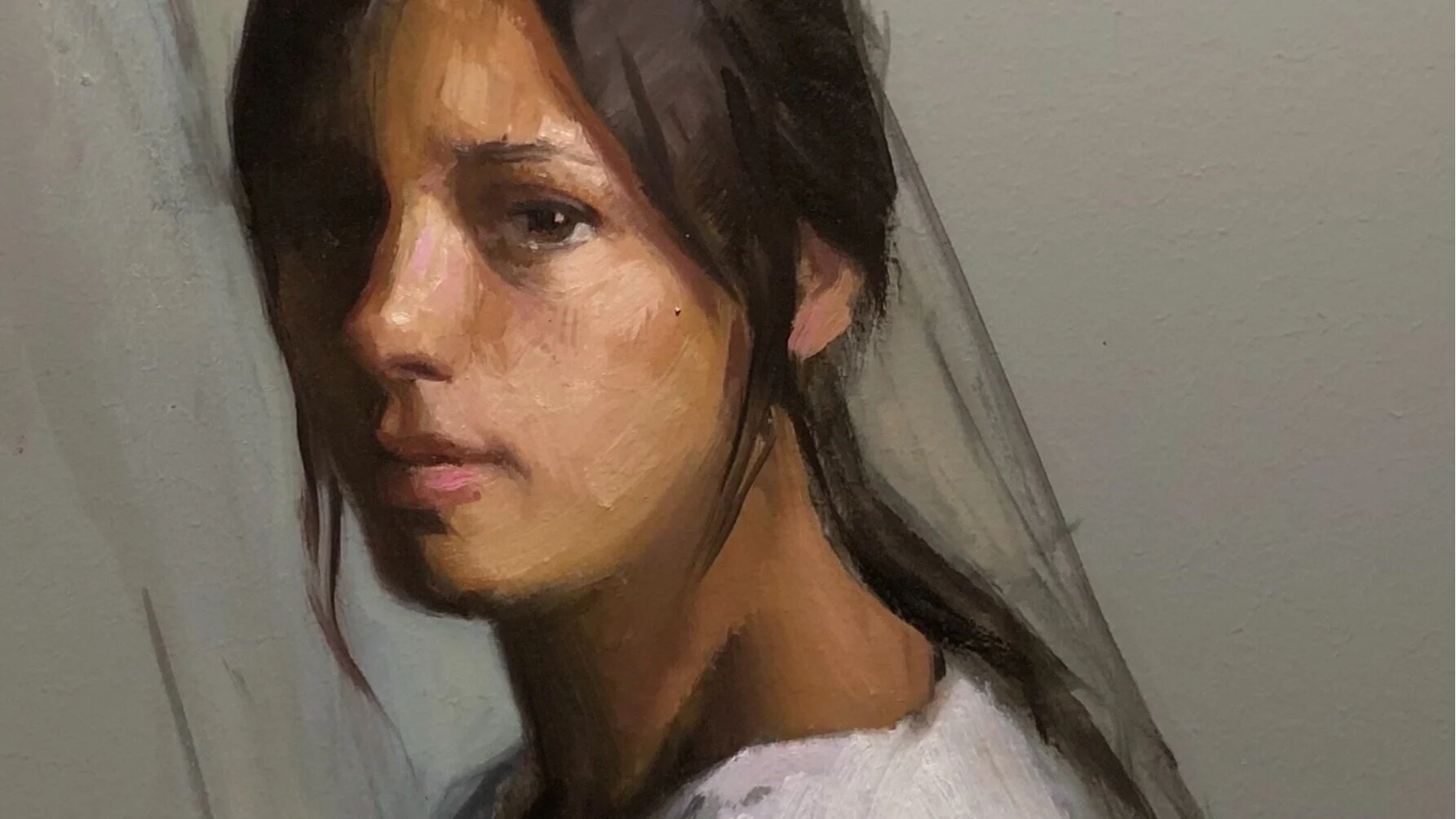
Reviews
Dominique Medici: Renowned Artist and Exceptional Teacher
A Review by Denny Taylor, Professor Emerita, Distinguished Alumna Columbia University
May 29th, 2021
Author Note: This review is based one year of taking and auditing art classes, watching videos available from sites representing world class artists, and sampling YouTube demonstrations by artists of similar standing.
Dominique Medici is a classically trained artist who has a global reach. Hers is an an art of great subtlety and confidence, and like Paul Singer Sargent she is an artist who knows exactly what effects she is trying to achieve.
Students in many countries and on different continents take classes with her. I became aware of Dominique’s art when I was researching artists on the web and came across her free videos on drawing. I watched them all and then decided to sign up for a course with her. I am now beginning my third course and will continue to study with her as I pursue my own painting.
In my review of artists and their classes and demonstrations that have been virtually available during the pandemic, Dominique stands out both as an artist and teacher. Watching her paint is comparable to watching a principal ballet dancer at the MET, or a world-renowned maestro play Bach. There is always a moment when she is demonstrating the painting of a portrait or a Venetian scene when the poetry of her brush strokes leaves you in no doubt that Dominique Medici is a world class artist, on par with many of the great painter of previous centuries and beyond the achievements of many revered artists today.
But what sets Dominique apart from the other renowned artists whose oil painting techniques I have studied in the past year is her capacity to scaffold the paintings of students without falling into the common trap of “paint like me.” Her ability to facilitate learning without resorting to “paint like me” sets her apart from almost all the artists I have studied.
One great artist whose paintings I admire explained during a demonstration of his painting process, “Painting is creating the illusion of form. You have to think of yourself as a magician – ‘don’t look there, look here’. It’s all about illusion.”
Another artist said, “We don’t have formulas. You need to get connected to your painting so it can tell you what it needs.”
I agree with the rejection of formulas, but I disagree with the idea that painting is all about illusions or that the painting will tell you what it needs. Illusion and magic might set a painter apart from others who are more pedantic, and illusion and magic might do the same for some works of art that sets them apart from those that are more pedestrian, but the illusion and magic does not happen without deep knowledge of architecture and proportionality, without thinking systematically about hue and value, color and shape, light and shade, or without studying edges.
“Every edge you travel along,” Dominique says, “something is happening.”
“I am not making anything up,” she tells students. “I paint what I see.”
In Dominique’s classes the task is to learn from her not what she sees, but how to see when painting a portrait, landscape or still life. She teaches pattern to detail, big to small, and in this context, she states, “It’s nice to give the viewer something to imagine.”
“It’s all about the process,” she explains, and her students take note.
It’s the process that Dominique focuses on in her critiques of students’ paintings. One week there is a demonstration by Dominique and the following week she critiques her students’ works. It is one of the ways participants in her courses gain the deep knowledge they need to think systematically about all the aspects of painting mentioned above – including the architecture and proportionality of a painting, as well as about hue, value, light and shade, and edges.
Among others, these are concepts among others keep reoccurring. Studying with Dominique they become embedded in our thinking. They shape our understandings and provide us with the tools we need to create original works of art that would have been beyond many of us before taking classes with Dominique.
What is striking about the paintings of Dominique’s students is their originality. In painting a portrait there are many similarities, but also differences along all the dimensions that have been previously mentioned. Even though we are painting the same model each portrait is an original, reflecting the skill and disposition of the student who has painted it. In a note to the class, I wrote:
Bravo to everyone! These portraits are compelling! So amazing to see them all together. I’ve been scrolling through, stopping and enlarging, then scrolling again. What impresses me is that the group seems to have captured the moods of the model - so many emotions - strong and resilient, sad and unhappy. Based on the portraits, the model certainly has a sense of humor and would have a lot to say for himself.
Stepping back and viewing Dominique’s classes from the perspective of my own scholarship, what she has done for me has shown me a way forward – a way to integrate my painting with my research and writing in the social and physical sciences. Her course on John Singer Sargent’s Venetian Scenes has reunited me with my undergraduate study of fine art in London in the college that was founded by John Ruskin - a contemporary and friend of Sargent. The intricacy of these connections is remarkable and has enabled me to connect up a lifetime of research, writing and social justice advocacy with my study of oil painting more than fifty years ago.
I am now embarking on paintings of the people who have shared their lives with me in regions of armed conflict and other catastrophes. Among the many photographs I have taken as part of my ethnographic research there are iconic images that have stayed with me – mostly of mothers and children in desperate of circumstances that break our hearts and touch our souls. There are just a few that I will now paint. Not as a great artist – which I am not – but as an ethnographer who knows how to record events that have happened that we should not forget. Dominique Medici has made this possible for me. It would not have occurred to me to take up this task if it had not been for studying oil painting with her. I am grateful to her and write this review to encourage others to study oil painting with her.
